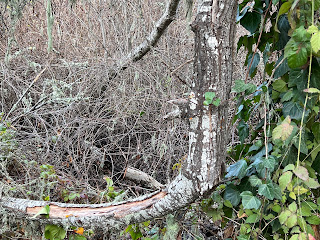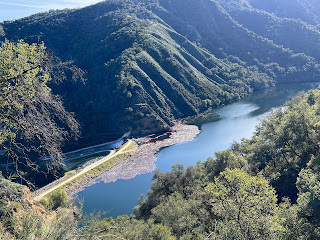6. John McPhee, Draft No. 4: On the Writing Process (2017) (2/14/23)
I explained a couple of weeks ago how I decided on this book. I have now finished it. It was a pleasant read. I can't say I learned much: the most pertinent chapters for me "on the writing process" were the first one, titled "Progression," in which McPhee describes the evolution of his approach to writing a profile of someone of interest, and especially the second, "Structure," in which he describes in detail just how several of his long-form pieces for the New Yorker, where he has been a staff writer for over half a century, are put together, often weaving together thematic elements and chronology, often in an interrupted fashion.Subsequent chapters are "Editors & Publisher," containing anecdotes about New Yorker editor William Shawn and others; "Elicitation," about the interview process and note-taking; "Frame of Reference," about assumptions writers make about their readers' cultural knowledge; "Checkpoints," about fact-checking; "Draft No. 4," about when a piece begins to feel as if it has a life of its own, as well as about copy editing and finding just the right word; and "Omission," about knowing what to keep and what to cut.
McPhee uses examples from his own experience—which is star-studded: Richard Burton (and Elizabeth Taylor), Jackie Gleason, General Dwight D. Eisenhower, and many other people known within the publishing world are the focus of various anecdotes, as are the subjects of his wide-ranging nonfiction output.
Here is a bit from "Draft No. 4"—a note he wrote to his daughter Jenny, then a senior in high school, who was complaining about "the difficulty she was having getting things right the first time, worried by her need to revise."
"Dear Jenny: The way to do a piece of writing is three or four times over, never once. For me, the hardest part comes first, getting something—anything—out in front of me. Sometimes in a nervous frenzy I just fling words as if I were flinging mud at a wall. Blurt out, heave out, babble out something—anything—as a first draft. With that, you have achieved a sort of nucleus. Then, as you work it over and alter it, you begin to shape sentences that score higher with the ear and eye. Edit it again—top to bottom. The chances are that about now you'll be seeing something that you are sort of eager for others to see. And all that takes time. What I have left out is the interstitial time. You finish that first awful blurting, and then you put the thing aside. You get in your car and drive home. On the way, your mind is still knitting at the words. You think of a better way to say something, a good phrase to correct a certain problem. Without the drafted version—if it did not exist—you obviously would not be thinking of things that would improve it. In short, you may be actually writing only two or three hours a day, but your mind, in one way or another, is working on it twenty-four hours a day—yes, while you sleep—but only if some sort of draft or earlier version already exists. Until it exists, writing has not really begun."
The difference between a common writer and an improviser on a stage (or any performing artist) is that writing can be revised. Actually, the essence of the process is revision. The adulating portrait of the perfect writer who never blots a line comes Express Mail from fairyland.
I am now interested in sniffing out the various McPhee books that sit waiting for me in the garage. There's a good excuse to get in there and do some sorting and culling.









































